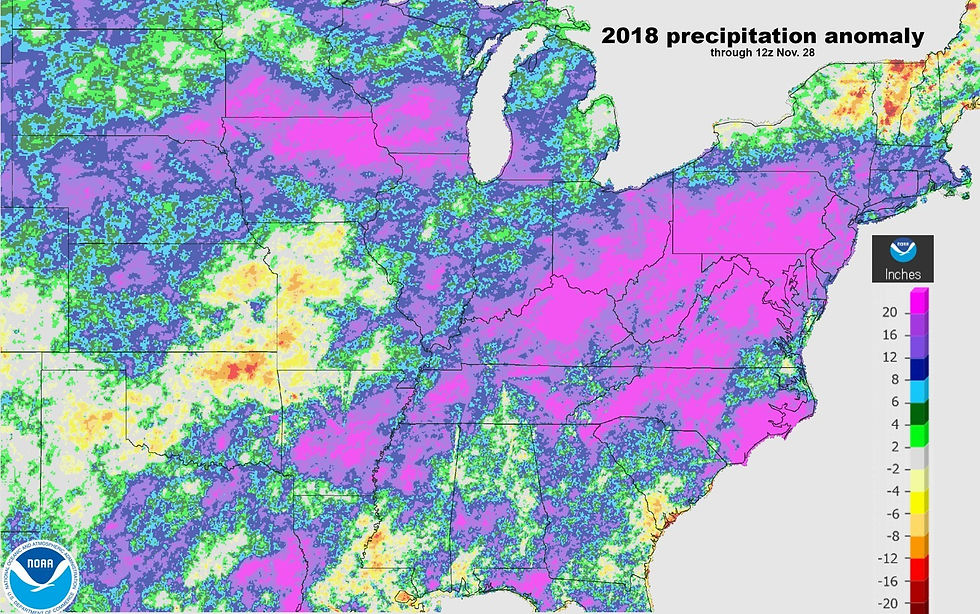Drones Are Here to Stay: Guidance for Implementation of sUAS
- Watershed Moments
- Oct 27, 2017
- 3 min read
Small Unmanned Aerial Systems (sUAS) have been on the commercial marketplace for several years; offering stream restoration professionals a variety of benefits. As stream practitioners, it is important to understand the means and methods to implement these systems as well as how to use this cost-effective tool to enhance a variety of tasks including communication, assessment, and monitoring.
Drone is the term most people are familiar with, but the technical acronym is UAV, unmanned aerial vehicle, or sUAS, small unmanned aerial system. The most common types of drones are the fixed wing and the multi rotors drones.
What are the advantages of drones for stream practitioners?
One of the advantages of drones is that you can choose the sensor that best fits your needs. The most common sensor is a camera. Using a camera on a drone gives a bird’s eye view of any project, giving the user a new perspective and a better layout of the construction area. The unique perspectives that drones give are also great for assessing disaster areas. For example, the 2013 Colorado Flood left a devastating impact on communities and created/introduced various ecological setbacks. A local company (CLMax Engineering) volunteered their drone to take aerial shots of the affected areas. Taking the camera and turning it into a tool for an emergency is another example of the versatility of drones.
Another advantage of drone technology is their 3-D modeling capabilities. The data that drone pictures and videos collect can be generated into 3-D models. For example, in years past, when conducting an assessment on an eroded stream bank it was more challenging. It could have included climbing up a high embankment, taking a cross section, and planed bank pins, etc. With drone technology, pictures can be collected and generated in a 3-D model of the eroded bank, which can improve assessments on sediment loss on stream banks.
Drone technology is constantly evolving. One technological advancement are new sensors that can be attached to drones. Another advancement is longer flight times and improved battery life. Drones will also start to differ in size, depending on their applications. The size changes have already started to occur with DJI’s new spark mini drone and their Matrice 600 being the larger one. Swarm dronesare also among the new emerging drone technology. These drones, multiple in nature, act as a collective organism, sharing one distributed brain for decision-making and adapting to each other like swarms in nature. The difference with swarm drones is that instead of controlling multiple drones with multiple people or remotes, the drones receives algorithms from a single human controller and then it will direct itself in that location. So, by applying this to photogrammetry, you can send out five drones instead of one to get your model done faster and cover more ground.
Learning how to implement your drone into your work flow could become an essential part of your project planning. Deciding what outcomes, the project requires will help determine the best use for a drone. Next, decide which type of drone is required. Does a fixed wing to cover more area or the ease and stability with a quadcopter benefit your project objectives? Lastly, register the drone. The FAA controls air space above ground so compliance is essential.
From site selection to construction and beyond, these sUAS allow one to gain a new perspective on restoration projects. Utilizing the on-board cameras and GIS tools available allows stream restoration professionals to effectively communicate pre- and post-restoration site conditions. sUAS’s allow on the ground assessment teams to cover more area in less time with detailed visual assessment data that can instantly be sent to office team members located anywhere in the world. After construction, a project can be easily monitored from the sky, giving approval agencies a new perspective and confidence in the images provided to them for review.
Contact EQR:
As environmental construction experts for over 26 years, Environmental Quality Resources is proud of our mission of working outdoors to preserve and protect our watershed in a positive way. Visit us online or give us a call at (410) -923-8680 to get more information and see if we are what you’re looking for. Looking to see what we are currently working on and more about our company? Follow us on Facebook, Instagram, LinkedIn, Twitter, and YouTube!


















Comments